A few days ago I was hanging out with a friend drinking a few beers discussing important science-y stuff, and the subject of religion came up. As it tends to do during heated science debates.

Image via greatist
Neither one of us is very religious. We’re both what you’d call when-mom-calls-christians, in that we don’t actively engage in the religious world of our own volition. Sure, we know how a church looks like on the inside, but unless our parents are in town and we can’t avoid being there, we won’t come visit sober.
Don’t get me wrong, this is not an article about why religion has outlived its use, why one take on spirituality is better than another, why science is right and faith is not or vice-versa. These are all very personal issues, and everyone has to choose for themselves whether to be a believer or not. And I respect both takes.
While I don’t make much time for organized religion in my life, I do find religion as an object of study fascinating. I like to see what makes people tick and to see the way our ancestors tried to make sense of a chaotic world, to explain phenomena that they couldn’t understand. I feel that religious belief and mythos are intimately tied to the way our subconscious mind works, and are ultimately profoundly human expressions. These are the topics we discussed. At the end of it all we said goodbye and went home, but the talk we had stuck with me.
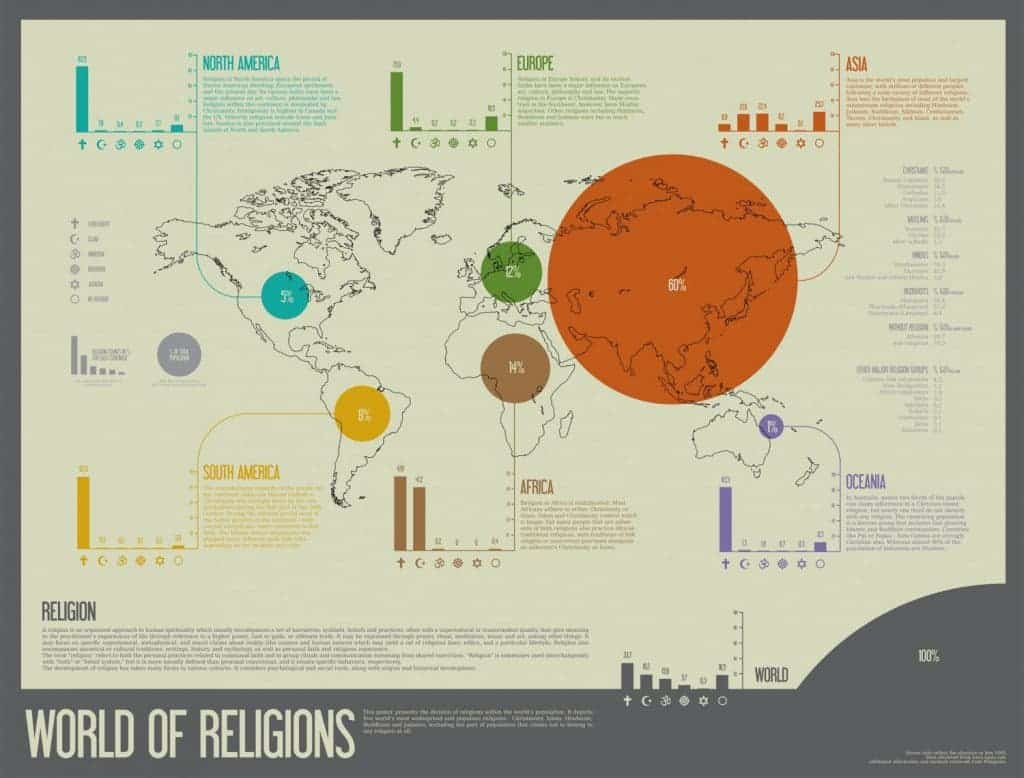
Image via geographics.cz
What drives us to create these intricate systems of tales, beliefs, and myths, who starts them and why do they propagate? Is it just the need to explain the unexplainable? Is there a deeper need for order nestled in our brain that makes us pin rain and drought, life and death on some higher, but purposeful, being?
I don’t know. But what I can show you is what we know about how religion appeared, spread, and what it thought us up until today.
Setting the stage
Humanity’s closest living relatives are common chimpanzees and bonobos.
These primates share a common ancestor with humans that lived between six and eight million years ago. It is for this reason that chimpanzees and bonobos are viewed as the best available surrogate for this common ancestor.
Author Barbara King argues that while non-human primates are not religious, they do exhibit some traits that would have been necessary for the evolution of religion. These traits include high intelligence, a capacity for symbolic communication, a sense of social norms, a realization of “self” and a concept of continuity.
Marc Bekoff, Professor Emeritus of Ecology and Evolutionary Biology at the University of Colorado, Boulder, argues that many species grieve death and loss. Elephants, for example, demonstrate rituals around their deceased, including long periods of silence and mourning at the point of death and a process of returning to grave sites and caressing the remains.
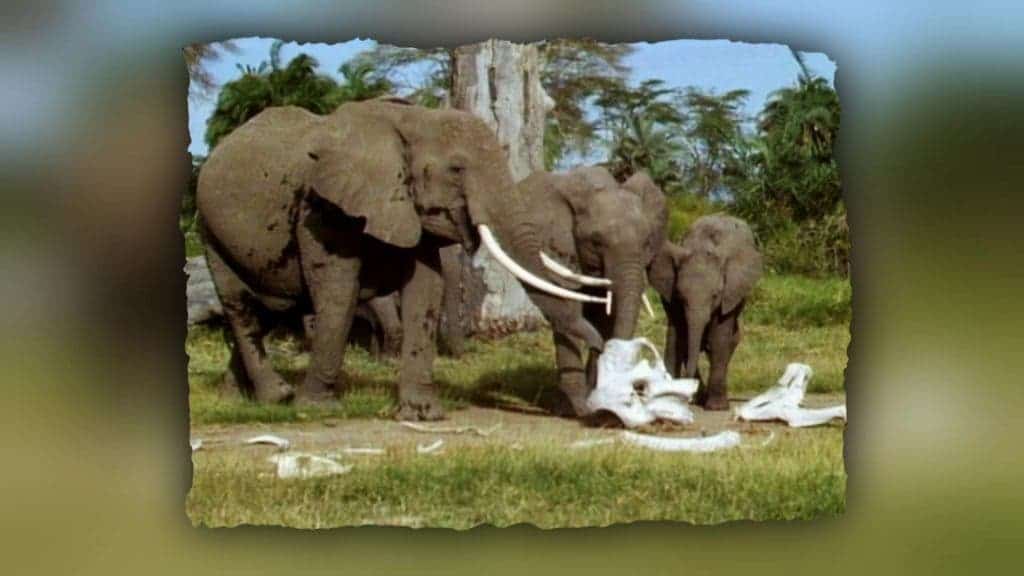
Image via channel.nationalgeographic.com
But religion, as we understand it, is about more than funerary practices. Anthropologists John Monoghan and Peter Just say:
“It seems apparent that one thing religion or belief helps us do is deal with problems of life that are significant, persistent, and intolerable. One important way in which religious beliefs accomplish this is by providing a set of ideas about how and why the world is put together that allows people to accommodate anxieties and deal with misfortune.”
So where does it start
The origin of religion is uncertain. Intentional burial, particularly with grave goods, may be one of the earliest detectable forms of religious practice (the onset of burial itself being an indicator of behavioral modernity – practices that separate us from simple primates) since, as Philip Lieberman suggests, it may signify a “concern for the dead that transcends daily life”.
Though disputed, evidence suggests that the Neanderthals were the first to intentionally bury their dead, doing so in shallow graves along with stone tools and animal bones. Examples of this practice include Shanidar in Iraq, Kebara Cave in Israel and Krapina in Croatia. Some scholars, however, argue that these bodies may have been disposed of for more practical reasons.
A number of archeologists propose that Middle Paleolithic societies — such as that of the Neanderthals — may also have practiced the earliest form of totemism or animal worship in addition to burial of the dead. It has been suggested, based on archeological evidence from Middle Paleolithic caves, that a widespread Neanderthal bear-cult existed.
Animal cults in the following Upper Paleolithic period — such as the bear cult — may have had their origins in these hypothetical Middle Paleolithic animal cults. Animal worship during the Upper Paleolithic intertwined with hunting rites. Archeological evidence from art and bear remains reveals that the bear cult apparently involved a type of sacrificial bear ceremony in which a bear was shot with arrows and then was finished off by a shot in the lungs and ritualistically buried near a clay bear statue covered by a bear pelt, with the skull and the body of the bear buried separately.
Such practices have been traced back to prehistoric times by archeologists, and the earliest evidence we have of this comes from the Paleolithic. Simon E. Davies put together what the calls “The Evolutionary Tree of Religion”, a compilation of known religions and religious practices ordered by time:
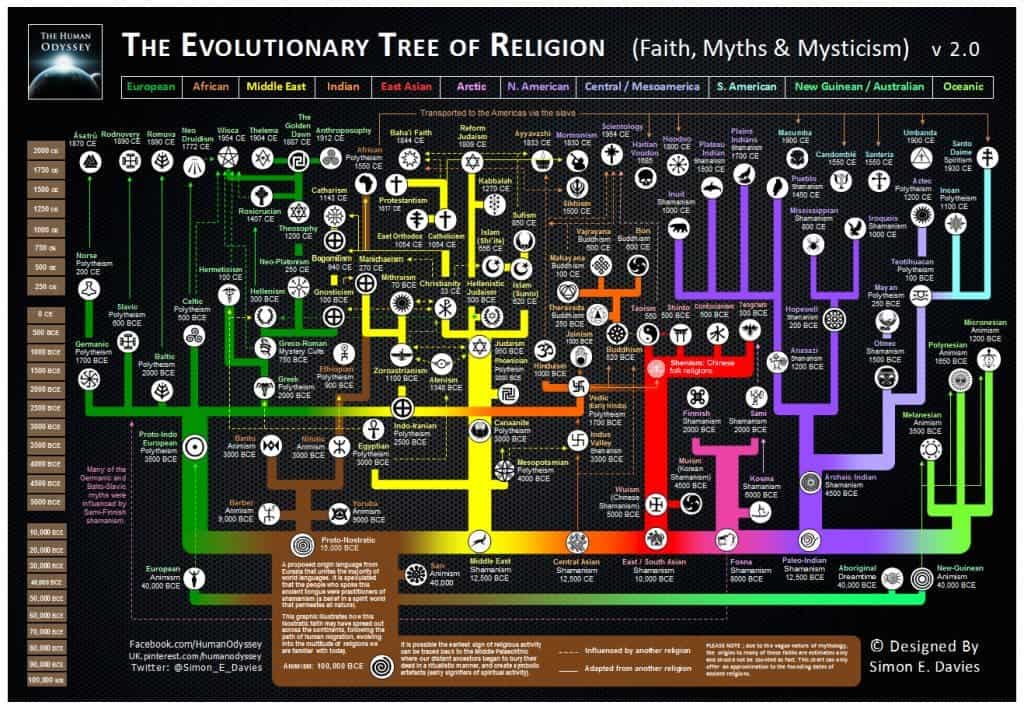
Much like a family tree, his work orders beliefs according to influences, showing us who gave “birth” to whom. In essence, the tree shows interactions between different groups of people: religions are ideas, traditions, and moral guidelines that get passed on from generation to generation inside a closed group (tribe, city, etc) and are shared with neighbors and nomads in times of peace, conquerors and conquered alike in times of war.
As human populations settled down following the agricultural revolution, a sense of unity began to form. This would lead to the formation of ancient countries and empires. Religion in these times is indistinguishable from mythology, and concerns itself with the spiritual aspect of the human condition, gods and goddesses (or a single personal god or goddess), the creation of the world, a human being’s place in the world, life after death, and how to escape from suffering in this world or in the next. And, in a nice twist on the Christian texts, every culture has created its own god in its own image and resemblance.
The world’s oldest religion still being practiced today is Hinduism (know to followers as ‘Sanatan Dharma’, Eternal Order) but, in what is considered ‘the west’, the first records of religious practice come from Egypt around 4000 BC. The Egyptian Creation Myth tells us that, at first, there was only Ocean. This ocean was breadth-less and depth-less and silent until, upon its surface, there rose a hill of earth known as the ben-ben, the primordial mound, which, it is thought, the pyramids symbolize. The great god Ra (the sun) stood upon the ben-ben and spoke, giving birth to the god Shu (of the air), the goddess Tefnut (of moisture), the god Geb (of the earth), and the goddess Nut (of the sky).
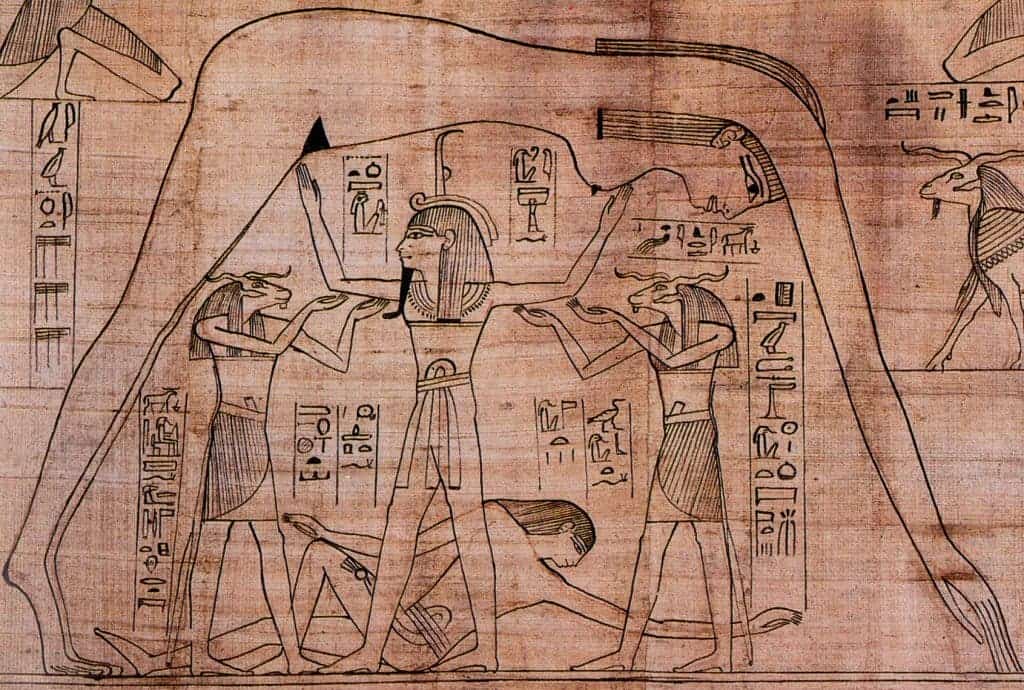
Image via Wikipedia.
The exact details of the mythos aren’t relevant right now. What is remarkable is that we can see the start of a religious narrative of sorts: each god stands for his own domain (be it the sun or earth and so forth), they function much like a family (the sun was born first — he is the father, and earth and air came after — they are sons). This allowing collective human wisdom, wisdom that already intuited what science would come to tell us much later on about how things came to be, to be parallel to something that can be related to easily — family structure. This narrative was passed down orally and then through writing, both internally inside family, tribe, and country structures, and outside, to other tribes, peoples, and countries.
A remarkable character to illustrate this is Osiris. Ra had intended Nut as his bride but she fell in love with Geb. Angry with the two, Ra separated them by stretching Nut across the sky, high and away from Geb on the earth. Although the lovers were separated during the day, they came together at night and Nut bore three sons, Osiris, Set, and Horus, and two daughters, Isis and Nephthys. Osiris, as eldest, was announced as ‘Lord of all the Earth’ when he was born and was given his sister Isis as a wife. Set, consumed by jealousy, hated his brother and killed him to assume the throne.
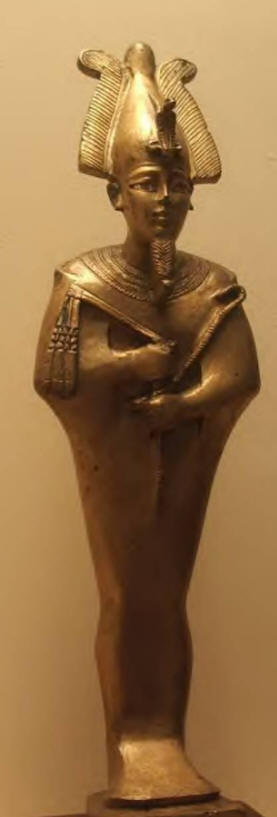
Image via thunderbolts.info
This same pattern of creation of existence by a supernatural entity who speaks all into being, of how the world came to be as it is (the canopy of sky over the earth, for example), other supernatural beings emanating from the first and greatest one, a son — who is a powerful entity himself — who is killed or dies for his people and comes back to life for the good of his people, and an afterlife similar to an earthly existence is repeated in religious texts from Phoenicia (2700 BC) to Sumer (2100 BC) to Palestine (1440 BC) to Greece (800 BC) and finally to Rome (c. 100 AD). The Phoenician tale of the great god Baal, who dies and returns to life to battle the chaos of the god Yamm, was already old in 2750 BCE. During this time, the city of Tyre was founded and the Greek story of the dying and reviving god Adonis (c. 600 BC) was derived from earlier Phoenician tales based on Tammuz — a story which was borrowed by the Sumerians (and later the Persians) in the famous Descent of Innana myth.
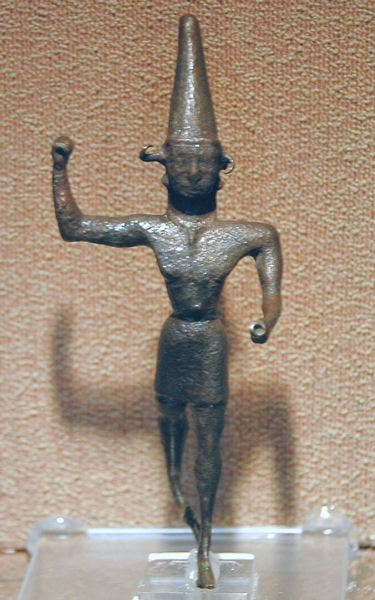
Image via livius.org
This is a great example of the influences the Tree shows. Religions borrowed from the religions before them, and myths intertwined as people intermingled. Future religions will follow the same patterns, borrowing from the religions in the area where they appear, adding and changing myths.
The first of the organized religions we still see today to come to life is Hinduism. This awesome video by Business Insider shows how 5 of today’s major religions spread across the globe:
What we have today
The largest 5 religious systems today are Christianity, Islam, Judaism, Buddhism, and Hinduism. Let’s take a brief look at each one of them, with help from the guys over at religionfacts.com
Christianity

Christians believe in a single, loving God who has revealed himself and can be known in a personal way, in this life. A Christian’s focus is not on religious rituals or performing good works, but on enjoying a relationship with God and growing to know him better.
Faith in Jesus Christ himself, not just in his teachings, is how the Christian experiences joy and meaningful life. Christians do not identify Jesus as a prophet pointing to God or as a teacher of enlightenment. Rather, he’s viewed as God in human form. He performed miracles, forgave people of their sins, and said that anyone who believed in him would have eternal life. He made statements like, “I am the light of the world; he who follows me will not walk in darkness, but will have the light of life.”
Christians regard the Bible as God’s written message to humankind. In addition to being a historical record of Jesus’ life and miracles, the Bible reveals God’s personality, his love and truth, and how one can have a relationship with him.
Whatever circumstances a Christian is dealing with in their life, the Bible teaches that they can confidently turn to a wise and powerful God who genuinely loves them. They believe that God answers prayer and that life takes on meaning as they live to honor him.
Islam

The single most important belief in Islam, and arguably the central theme of the religion, is that there is only one God. The name of God is Allah, which is simply Arabic for “the (al) God (Ilah).”
For a Muslim, the object of life is to live in a way that is pleasing to Allah so that one may gain Paradise. It is believed that at puberty, an account of each person’s deeds is opened, and this will be used on the Day of Judgment to determine his eternal fate.
Like Christianity, Islam teaches the continued existence of the soul and a transformed physical existence after death. There will be a day of judgment and humanity will be divided between the eternal destinations of Paradise and Hell.
Judaism

Judaism is one of the oldest religions in the world. Their sacred text, the Hebrew Bible or Tanakh, teaches several doctrines — about God, the Messiah, human beings, and the universe — making beliefs very important to Jews. Judaism has no official creed, however.
Judaism shares some beliefs with other world religions, like monotheism with Christianity and Islam, but in other respects, there are sharp differences between the faiths. In Judaism, reality is a single, all-powerful God. It is this belief that made the Jews unique among other ancient Semitic peoples and that became the legacy Judaism has passed on to the entire Western world. God’s name in Hebrew is YHWH (Yahweh, or Jehovah), which simply — but quite powerfully, in my eyes — means “I am.”
Jewish sacred texts and literature have little to say about what happens after death, which may seem surprising to non-Jews since the sacred texts of Christianity and Islam, both of which have their foundations in Judaism, elaborate rather fully about the afterlife.
Judaism has no creed and beliefs of individual Jews can vary widely. However, the great 12th-century rabbi Maimonides put together “13 Articles of Faith” that he believed every Jew ought to adhere to, and this is often used as a summary of core Jewish beliefs.
Hinduism

Hinduism embraces a diversity of beliefs, a fact that can be initially confusing to Westerners accustomed to creeds, confessions, and carefully-worded belief statements. One can believe a variety of things about God, the universe, and the path to liberation, and still be considered a Hindu. Perhaps the most well-known Hindu saying about religion, and one that best-encompasses its essence, is: “Truth is one; sages call it by different names.”
Still, there are some beliefs common to nearly all forms of Hinduism that can be identified, and these basic beliefs are generally regarded as boundaries outside of which lies either heresy or non-Hindu religion. These fundamental Hindu beliefs include: the authority of the Vedas (the oldest Indian sacred texts) and the Brahmans (priests); the existence of an enduring soul that transmigrates from one body to another at death (reincarnation); and the law of karma that determines one’s destiny both in this life and the next.
Hinduism is a decidedly theistic religion, but it can be difficult to determine whether it is a polytheistic, pantheistic, or even monotheistic religion. Of course, this is chiefly a western question: the Indian mind is much more inclined to regard divergent views as complementary rather than competing.
Buddhism

Buddhists do not worship any gods or God. People outside of Buddhism often think that Buddhists worship the Buddha. However, the Buddha (Siddhartha Gautama) never claimed to be divine, but rather he is viewed by Buddhists as having attained what they are also striving to attain, which is spiritual enlightenment and, with it, freedom from the continuous cycle of life and death.
Most Buddhists believe a person has countless rebirths, which inevitably include suffering. A Buddhist seeks to end these rebirths. They believe it is a person’s cravings, aversion, and delusion that cause these rebirths. Therefore, the goal of a Buddhist is to purify one’s heart and to let go of all yearnings toward sensual desires and the attachment to oneself.
Buddhists follow a list of religious principles and very dedicated meditation. When a Buddhist meditates it is not the same as praying or focusing on a god, it is more self-discipline. Through practiced meditation, a person may reach Nirvana — “the blowing out” of the flame of desire.
Buddhism provides something that is true of most major religions: disciplines, values, and directives that a person may want to live by.
Related Posts



